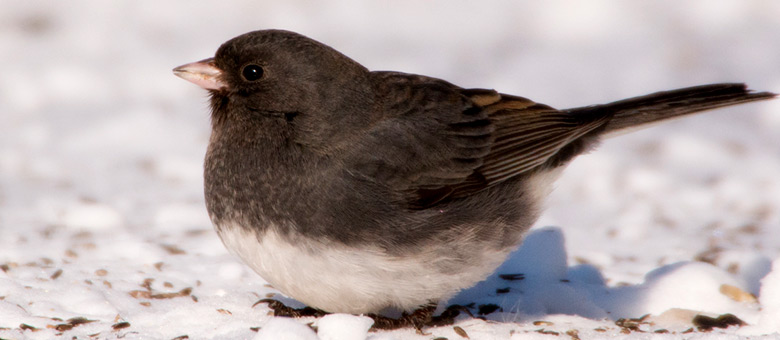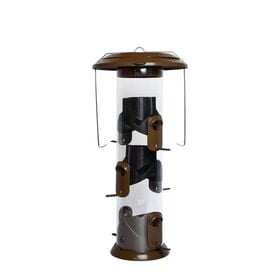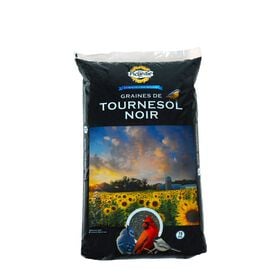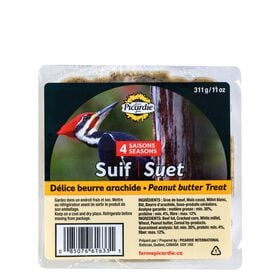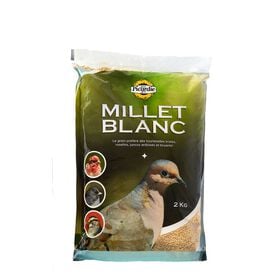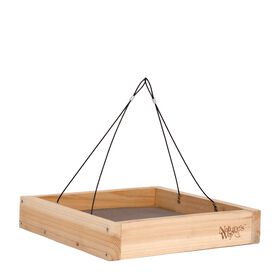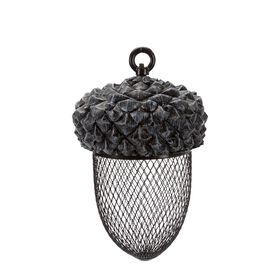The recent cold that we’ve experienced is a reminder that winter is on our doorstep, and birds are well aware of it! In fact, some have already headed south (the others are still packing for their trip). Yes, they’re off to spend the winter in the southern US, the Caribbean and South America, and yes, we’re all jealous.
That said, not all birds take off in winter. In fact, nearly 90 species of bird will be staying right here in Quebec to wait out the winter with us! But without any coat or other method of keeping warm, however will they do it?!

They put their territorial instincts aside
Since birds don’t have any territory to defend for reproduction purposes, a number of them put their territorial instincts to the side during the winter months, opting to join the crowd instead. Being a part of a larger group allows them to better spot predators. It also gives them more time to focus on finding food. Certain birds, such as wrens and sparrows, will even sleep side-by-side in order to conserve body heat.
They make fat reserves
Much like feathers, fat can be a good insulator, in addition to being an excellent source of energy for birds. Among certain birds, fat makes up 10% of body weight. This is why it is important that birds find food that is rich in fat: doing so ensures they have reserves for fall and winter.
Those birds that do choose to spend winter here will spend most of the day hunting for food in order to accumulate enough energy to get them through the night. Some will even stash their findings as reserves.
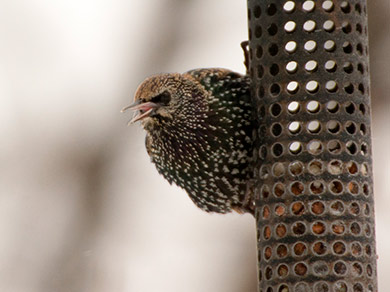
They shiver to create heat
During periods of extreme cold, birds may shiver by activating opposite muscle groups, which helps increase body temperature. Unlike humans, shivering does not lead to uncontrollable trembling!

They have efficient blood circulation
Another way in which birds adapt is by conserving the warm blood near the vital organs, to the detriment of other parts of the body. For instance, gulls and ducks can glide along the ice, with their paws on the verge of freezing, while their body temperature remains totally fine.
They drop in body temperature
One last strategy employed by birds involves conserving their energy by dropping their body temperature a few degrees during the night. Chickadees and wrens use this technique to conserve up to 25% of the energy they need.
Certain species, such as hummingbirds, even undergo periods of torpor. But this doesn’t happen with birds who stay here in winter: coming out of such a state requires too much energy!
So there you have it: some of the main adaption techniques birds have developed to endure some of the most rigorous Quebec winters!
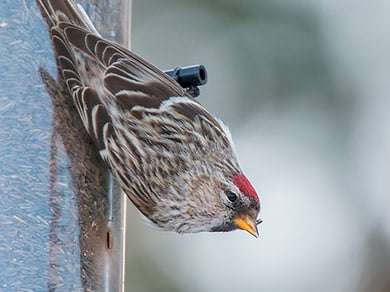
We’re in for an exciting one!
The presence of different bird species varies according to the amount of food available. While last winter was rather awful, notably due to the absence of a number of species of finches, this winter is shaping up to be a particular exciting one! Indeed, a number of redpolls, pine siskins, pine grosbeaks, crossbills, and even grosbeaks have already been spotted at a number of feeding stations across the province.
Here’s a list of the birds that will be spending winter with us:
- American black duck
- American crow
- American Goldfinch
- American kestrel
- American robin
- American three-toed woodpecker
- American tree sparrow
- Arctic redpoll
- Bald eagle
- Barred Owl
- Barrow’s goldeneye
- Black guillemot
- Black-backed wood-pecker
- Black-capped chickadee
- Blue jay
- Bohemian waxwing
- Boreal owl
- Brown creeper
- Brown-capped chicka-dee
- Bufflehead
- Canada Goose
- Carolina wren
- Common eider
- Common goldeneye
- Common merganser
- Common raven
- Common redpoll
- Common starling
- Cooper's hawk
- Dark-eyed junco
- Domesticated turkey
- Downy woodpecker
- Eastern screech owl
- European herring gull
- Evening grosbeak
- Glaucous gull
- Golden-crowned kinglet
- Gray jay
- Great black-backed gull
- Great grey owl
- Great horned owl
- Grey partridge
- Gyrfalcon
- Hairy woodpecker
- Harlequin duck
- Hooded merganser
- Horned lark
- House finch
- House sparrow
- Iceland gull
- Lapland longspur
- Long-eared owl
- Long-tailed duck
- Mallard
- Merlin
- Mourning dove
- Northern cardinal
- Northern goshawk
- Northern hawk-owl
- Northern mockingbird
- Northern saw-whet owl
- Northern shrike
- Peregrine falcon
- Pileated woodpecker
- Pine grosbeak
- Pine siskin
- Purple finch
- Purple sandpiper
- Red crossbill
- Red-bellied woodpecker
- Red-breasted merganser
- Red-breasted nuthatch
- Red-tailed hawk
- Rock dove
- Rock ptarmigan
- Rough-legged buzzard
- Ruffled grouse
- Sharp-shinned hawk
- Sharp-tailed grouse
- Short-eared owl
- Snow bunting
- Snowy owl
- Spruce grouse
- Tufted titmouse
- Two-barred crossbill
- White-breasted nuthatch
- Willow ptarmigan
